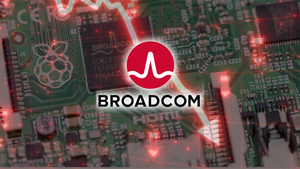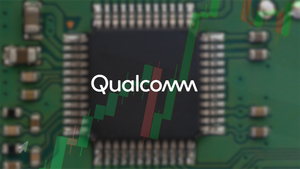Amazon Stock: Why it's Finally Included in the Dow Index

Does the recent addition of Amazon Inc. (NASDAQ: AMZN) to the Dow Jones Industrial Average signal that the 30-stock index is still relevant?
And what does the addition mean for Amazon stock?
There's been plenty of debate as to whether the price-weighted Dow is still a relevant market indicator.
It’s true that the S&P 500 reflects a broader swath of the economy and also tracks the smaller side of the large-cap universe, as well as more obscure stocks.
Investors can invest in the entire basket of Dow stocks with the SPDR Dow Jones Industrial Average ETF Trust (NYSEARCA: DIA).The Dow is trading lower in recent sessions, as top component UnitedHealth Group Inc. (NYSE: UNH) gapped down on reports that the insurance giant is the subject of a federal government antitrust investigation.
Replaced struggling Walgreens stock
Amazon stock is down 0.87% after joining the Dow on February 26. It replaced Walgreens Boots Alliance Inc. (NASDAQ: WBA), whose stock price is down 15.47% in the past five years and 5.60% in the past 10 years, joined the Dow in 2018.
Walgreens has been struggling, as have other pharmacy chains, with declining earnings. It had the Dow’s lowest price before being removed.
In the past, being included in the DJIA was a signal to investors, analysts and the financial media that a company is a stalwart of the American economy.
However, that’s something that pretty much everybody with a pulse already knows about Amazon. In fact, you might even ask why it took so long for Amazon to get the nod.
Walmart's stock split paved way for Amazon
A key factor for Amazon’s inclusion was Walmart Inc.’s (NYSE: WMT) announcement of a three-for-one stock split. That resulted in the retail industry having less representation in the index, a problem the addition of Amazon addressed.
The Dow’s price-weighted methodology has an effect on which companies are included. In June 2022, Amazon stock split 20-for-1. Before that, with a price of $2,400 would have meant complete domination of the index.
In comparison, UnitedHealth shares are trading at around $488, with the stock representing 8.63% of index weighting.
Amazon’s price was $174.53 at the time it joined the Dow. It accounts for about 2.92% of index weighting.
After its split, Walmart stock now accounts for about 1% of index weighting.
Dow selection not governed by strict rules
According to S&P Dow Jones Indices, “While stock selection for The Dow is not governed by a strict set of rules, the committee focuses on an eligible company’s reputation, its history of sustained growth, its interest to investors, and its sector representation of the broader market.”
There’s been increased emphasis on technology stocks in the past 25 years, with Intel Corp. (NASDAQ: INTC), Microsoft Corp. (NASDAQ: MSFT), Salesforce Inc. (NYSE: CRM) and Apple Inc. (NASDAQ: AAPL) all becoming Dow components.
Transportation and utilities stocks are tracked in their own Dow Jones averages, and are not part of the DJIA.
But will joining the Dow actually mean much for Amazon stock?
How important is Dow inclusion for Amazon?
Tom Hulick, CEO of Strategy Asset Managers, told MarketBeat that it may not make much of a difference.
“All things being equal joining the Dow is positive for Amazon, but I wouldn't say that it's hugely important,” he said. He cited the relatively low index weighting as a factor.
“Also, there's just not a massive amount of assets invested in Dow Jones Industrial Average ETFs/funds,” he said, adding that recent data showed $89 billion in assets indexed to the Dow at the end of 2022.
“So 3% of that is around $3 billion in inflows,” he said. “While $3 billion or so in inflows is definitely positive for the stock, I don't know that it will be very impactful on a stock with a market cap of $1.8 trillion.”
Amazon’s addition to the Dow is the first change since 2020, when Salesforce, Amgen Inc. (NASDAQ: AMGN) and Honeywell International Inc. (NASDAQ: HON) joined the club.
More News
View More




Recent Quotes
View More
Quotes delayed at least 20 minutes.
By accessing this page, you agree to the Privacy Policy and Terms Of Service.